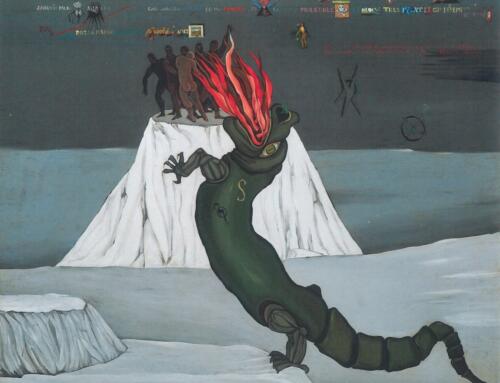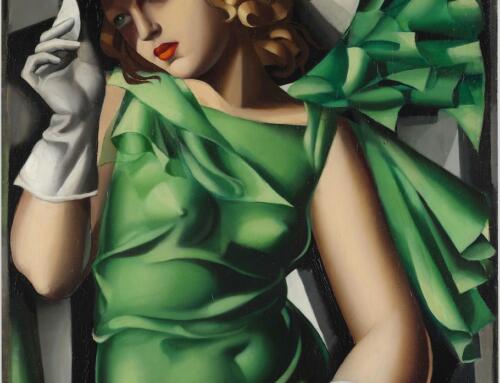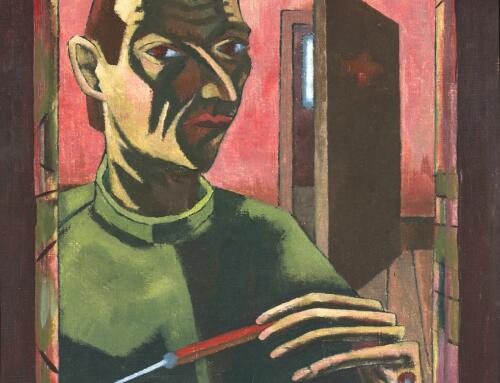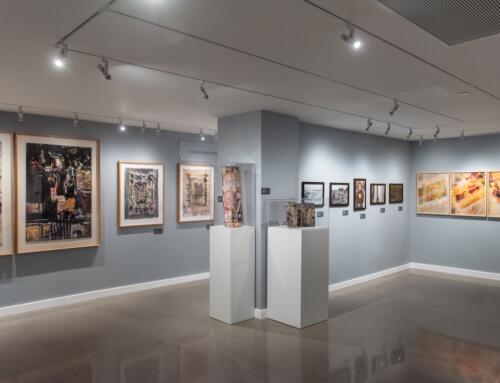
#GivingTuesday is here — a 24-hour period of global giving to non-profits!
You know what we do, and you know how clear the importance of fact-based historical context has become. And we’ll step up our work telling untold stories of marginalized artists persecuted by the German regime 1933-1945 — a time of societal and political challenges that very much resonates with today’s challenges.
Start this day of giving by making your donation to support our virtual programs that you enjoy!
Fleeing Nazi persecution, he came to Australia. Not as a free man like the photographer Horst Eisfelder, but as a British deportee on the Dunera, heading for the internment camps at Hay in New South Wales:
|
WEDNESDAY, DECEMBER 6 ONLINE |

Klaus Friedeberger, Children Playing, 1959-1962, oil on canvas. Copyright Klaus Friedeberger estate
Born in Berlin in 1922, the artist Klaus Friedeberger escaped Nazi Germany in 1937. After studying at the Quaker School in Holland, he arrived in London as a refugee in 1939. Classified as an ‘enemy alien,’ he was interned and subsequently deported to Australia on the transport ship Dunera. He spent two years in internment camps at Hay in New South Wales. Released in 1942, he joined the Australian Army Labour Corps, and after demobilization, he studied art at East Sydney Technical College. After ten years in Australia, Friedeberger returned to Europe and settled in London, where he lived and worked until his death in 2019.
Presentation by Monica Sidhu, followed by a conversation with the late Klaus’ wife Julie Friedeberger and British Museum curator Stephen Coppel, London.
And our Samson Schames lecture has been rescheduled! Thank you, Ilona Oltuski, for sponsoring the event in memory of Ruth Drory.
WEDNESDAY, DECEMBER 13 ONLINE
12:00 PM EST
”SAMSON SCHAMES (1898-1967).
FRAGMENTS OF EXILE”

Samson Schames, Kindling of the Lights, c. 1956. Glass tiles on glass, 56 x 71 cm. Jewish Museum Frankfurt
Samson Schames (1898-1967) came from a long-established Jewish family in Frankfurt am Main. With the support of his uncle, renowned gallery owner Ludwig Schames, he made his way into the 1920s art scene and began his training as a painter, graphic artist, and stage designer. Schames’ designs, drawings, and oil paintings from the period up to 1933 testify to his deep connection to Frankfurt and her landscapes.
This presentation by Annika Friedman from the Jewish Museum Frankfurt elaborates on the three important phases of the artist’s life and relates his time in Frankfurt and artistic beginnings to the work he made in British exile and finally to his new home, New York.

Alma Mahler-Werfel in New York
New York became Emmy Rubensohn’s final home as well. The networker and music patron moved there with her husband in 1947, from her refuge in Shanghai. She became very close friends with Alma Mahler-Werfel (1879-1964), the Austrian composer and socialite, who was one of the most desirable, controversial women of the century and the muse of many famous men, married to the composer Gustav Mahler, the architect Walter Gropius and the poet Franz Werfel. In July 1954, Emmy Rubensohn writes to Oskar Kokoschka, “Alma is so kind to me and we get along so well – it must be the same mold in us. She is gracious and so magnificent, like no other – even from the women who have already entered immortality like Cosima, George Sand, Pompadour etc., none has the greatness and originality of our Alma.”
Find out more in our exhibition, on view until January 14, 2024 at the GRASSI Museums in Leipzig (Germany):
YOUR SUPPORT MAKES OUR WORK POSSIBLE.
The Fritz Ascher Society is a not-for-profit 501(c)3 organization. Your donation is fully tax deductible. THANK YOU.
Let’s work together on healing this broken world, one discussion and kind act at a time, to help create a just, free and peaceful future for all.
All best wishes and
Happy holidays,
Rachel Stern
Executive Director










